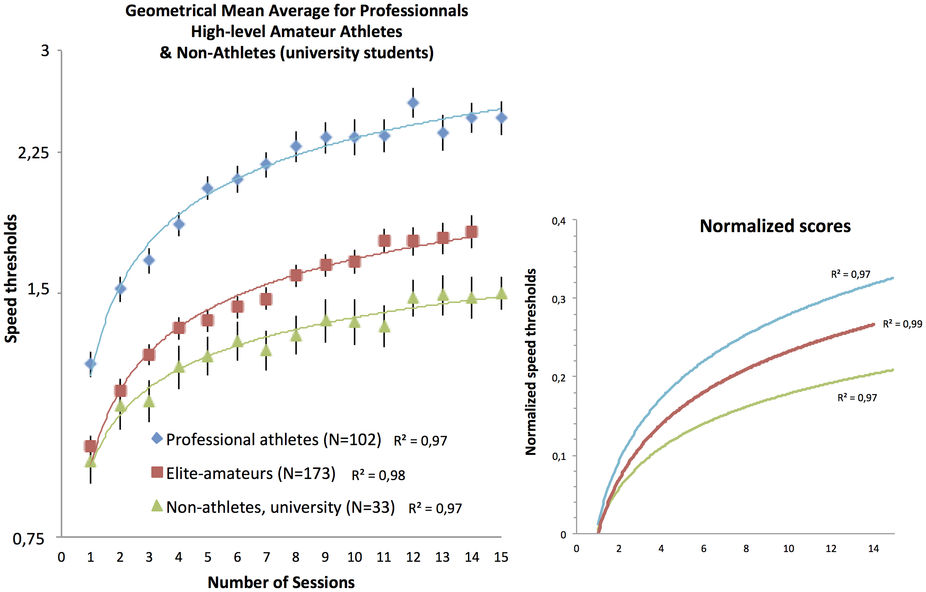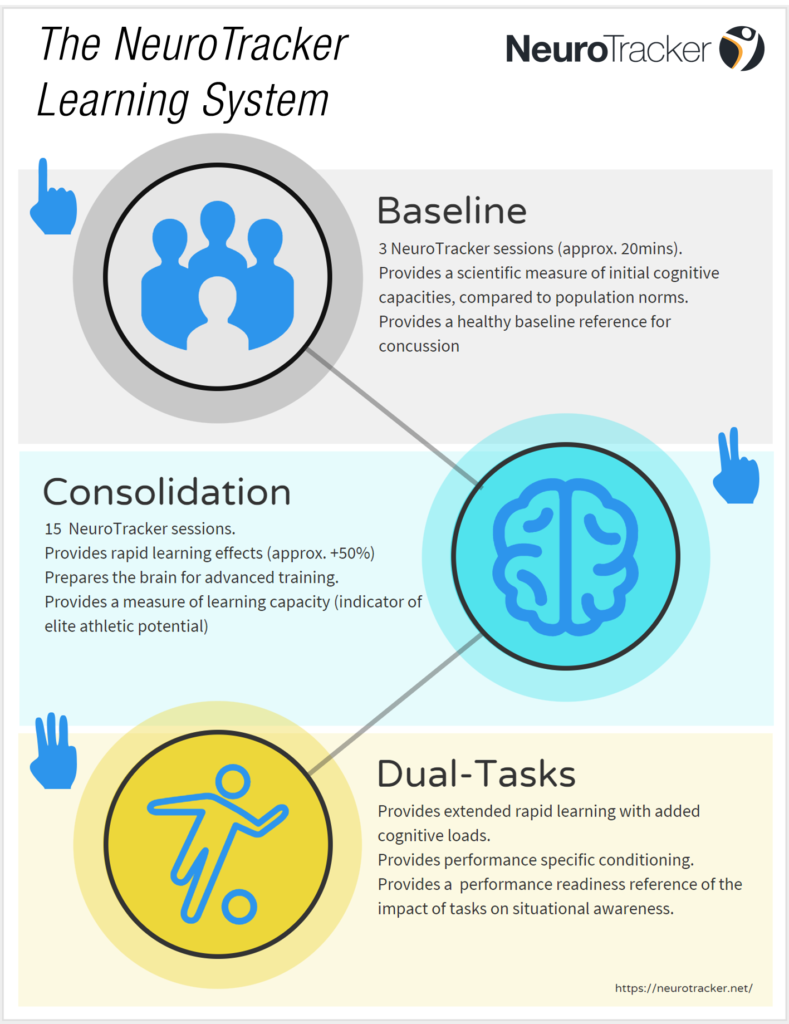The NeuroTracker Learning System is a scientific method for accelerated improvements in neurophysical performance. This patented technique was developed over several years through Professor Faubert’s research with elite American, Canadian and Europe athletes. Here we’ll get an idea of what it’s all about.
NeuroTracker training typically produces strong learning curves across all populations, whether it be for elite performers like sports stars and military special forces, or for lower functioning populations such as elderly people and children with learning disabilities. This has been established from across 700 NeuroTracker training centers around the globe, as well as through 40 published NeuroTracker studies.

Due to the predictability of these conditioning effects, any factors influencing NeuroTracker training can be revealed in the learning curve.
An example of this is an upcoming study at the University of Regina. Lead researcher Kim Dorsch wanted to find out if football players’ mental performance was helped or hindered by the crowd noise that players experience in the stadium. She tested two groups of football players on NeuroTracker, one group without noise, and the other with the blaring roars of the crowds.
Initial NeuroTracker scores were similar, but after 18 sessions the noise group had steadily climbed to superior scores. For the first time, this showed that stadium noise could have a boosting effect on high-level cognitive and learning functions of athletes.
On the flip side, back in 2012, it was found that even elite athletes at the top of their game could have their learning curved hampered by simply standing up. This discovery was made by Professor Faubert when he tested top NHL, EPL and Rubgy teams and saw that something was seriously off with the learning curves of one of the NHL teams (pink line below).

He dug deeper and found that the team’s player’s had done all their NeuroTracker training standing up, while all the other teams trained as instructed – sitting down. Just the extra cognitive load of balancing while standing was holding back the athletes’ full mental focus. Professor Faubert described the significance of this finding,
“A key insight we discovered was that even small, simple differences in training can impact an athlete’s ability to improve their performance. The mental resources involved with balance and proprioception for standing were clearly inhibiting these athletes’ capacity to perform and adapt at a cognitive level. This is quite remarkable given that the mental resources involved are very low-level compared to sports play. It became clear to me just how much physical motor-skills and cognitive abilities are intertwined.”
By demonstrating just how useful cognitive assessments could be, the finding opened up a new avenue of neurophysical performance research.
Though it initially seemed that isolated cognitive training yielded the best learning, this was just the first piece of the puzzle. Another study with Olympic athletes at the Catalan High Performance Center in Barcelona, showed that complex dual-tasks could be successfully integrated with NeuroTracker. The key was timing.
Across a 26 session NeuroTracker program, training progressed from sitting, to standing, to a complex balance task. Though standing and balance did impact NeuroTracker scores, the effects were only temporary. This is because the athletes had first completed training of 15 sessions sitting. This allowed the athletes to quickly adapt to dual-tasks and perform NeuroTracker at levels they would normally be at if just sitting. The research showed that with the correct training load over time, new levels of neurophysical performance could be achieved.
Professor Faubert believes this is because NeuroTracker provides consolidation for the brain, preparing it for learning. This is supported by evidence of NeuroTracker training sustainably boosting brainwave activity in ways that are associated with increased neuroplasticity.
This video gives an idea of how dual-task training can evolve over time:
Here we can also see how dual-tasks can be adapted to meet the specific performance needs of a sport:
A major challenge in coaching is simulating competition-level pressure in training. No matter how hard the workout is, physical training alone just doesn’t cut it.

In contrast, the NeuroTracker Learning System allows coaches to progressively push the boundaries of performance. This is because NeuroTracker always tests athletes at their mental threshold. When physical skills can be mastered under cognitive load, they can transfer to superior performance on the field when it matters most. With the key principles of consolidation training followed by progressive integration of dual-tasks with performance specificity - the sky is the limit!

The Multiple Stages of NeuroTracker Training – Performance
Mastering Performance the Ronaldo Way (Expert’s Corner)
How the Brain and Body are Connected in Sports Performance (Expert’s Corner)
latests news from us
*Elite athletes and skilled specialists from teams and organizations like these. All trademarks and logos are intellectual property and owned by the respective organizations listed, not NeuroTracker.*
** NeuroTracker is used in various peer reviewed medical research and applications under the guidance of a licensed medical professional. NeuroTracker is not intended to be substituted for professional medical advice, diagnosis, or treatment.